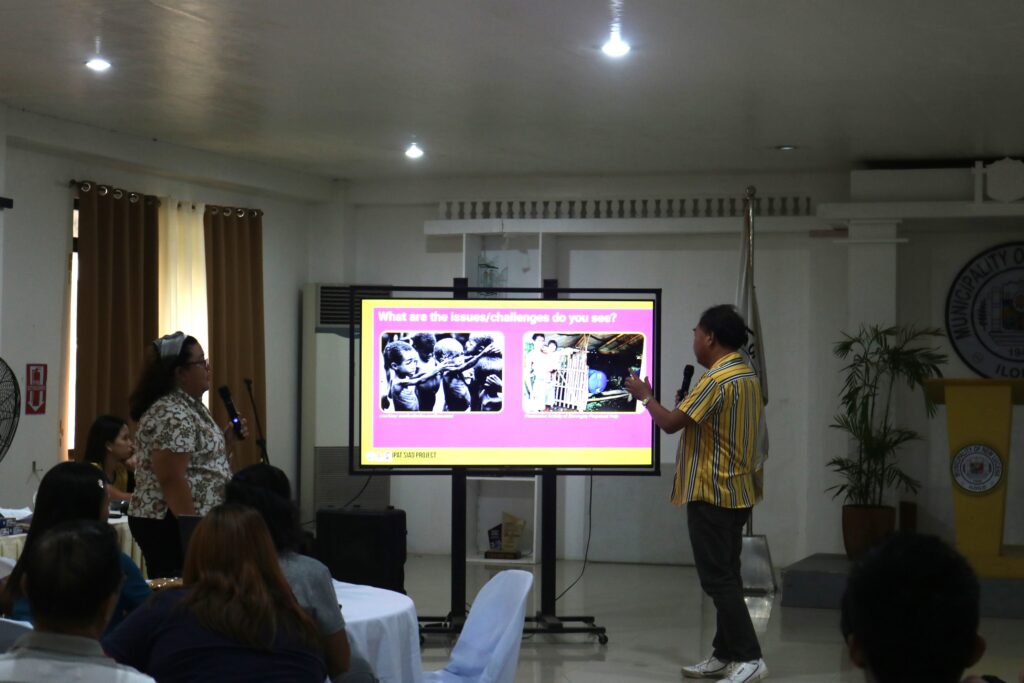On August 22, the Municipality of New Lucena rolled out a transformative initiative known as the Community Scorecard activity, a pivotal step in strengthening local governance and community engagement. The program, which started with a heartfelt prayer, set the stage for a day filled with learning and collaboration.

What’s the Scorecard Buzz? The Community Scorecard activity is designed to enhance citizen-government engagement, aiming for a more accountable, responsive, and participatory delivery of public services. The event, led by a dedicated Partnership for Transparency Fund Asia (PTFA) team, focused on sharing skills to assess government services and develop actionable steps for improved governance.
Who’s Who in the Workshop? The program featured a diverse lineup of facilitators. Mr. Willy Labaro, the CIT Chairperson, opened with a welcome address, emphasizing the significance of the training. Ms. Emy Perez from PTFA kicked things off with a comprehensive overview of the Community Scorecard tool and the role of citizen action in promoting good governance. Jansseen Balancio, also from PTFA, introduced tools for Community Needs Assessment, including Photovoice, Community Mapping, and GIS Mapping. Meanwhile, Sir Daniel Gagalac demonstrated the potential of Geographic Information Systems (GIS) in pinpointing and analyzing community data.
Why the Scorecard Matters? The benefits of the Community Scorecard are profound. It provides a structured approach to evaluate and improve the quality of government services by focusing on priority community issues. Through tools like Photovoice, participants can visually document and address social issues, while Community Mapping and GIS help in understanding and planning for local needs and resources.

Ms. Emy highlighted that social accountability involves two key elements: constructive engagement and monitoring. This means fostering a collaborative environment where citizens and government work together to address issues and continuously tracking progress through data. “Citizen action complements government action,” she noted, emphasizing the importance of civic involvement in enhancing service delivery.
Future Plans: Beyond the Scorecard Looking ahead, the Community Scorecard activity is set to become a cornerstone in local governance. Future plans focus on integrating the scorecard findings into actionable governance strategies. By addressing concerns like inadequate medicines and other local issues, the initiative aims to make a tangible impact on community well-being.
Participant Impressions Feedback from participants was overwhelmingly positive. Sir Isabelo Lucares likened the Scorecard to a detailed community profiling tool, essential for assessing service adequacy. Ma’am Delia Salanio appreciated the engaging nature of the workshop, noting its educational value. Secretary Catherine Lacdo-o saw the profiling process as a way to streamline data collection, improving the efficiency of public service delivery.
In Conclusion, The Community Scorecard activity is not just a workshop; it’s a step toward a more engaged and responsive local government. By equipping citizens with the tools to evaluate and influence public services, the program is laying the groundwork for a more accountable and participatory future.
As Ms. Emy Perez aptly put it, “Citizen action is crucial for improving service delivery and promoting community welfare.” The journey has just begun, and with continued collaboration and engagement, the possibilities are endless.





Leave a Reply